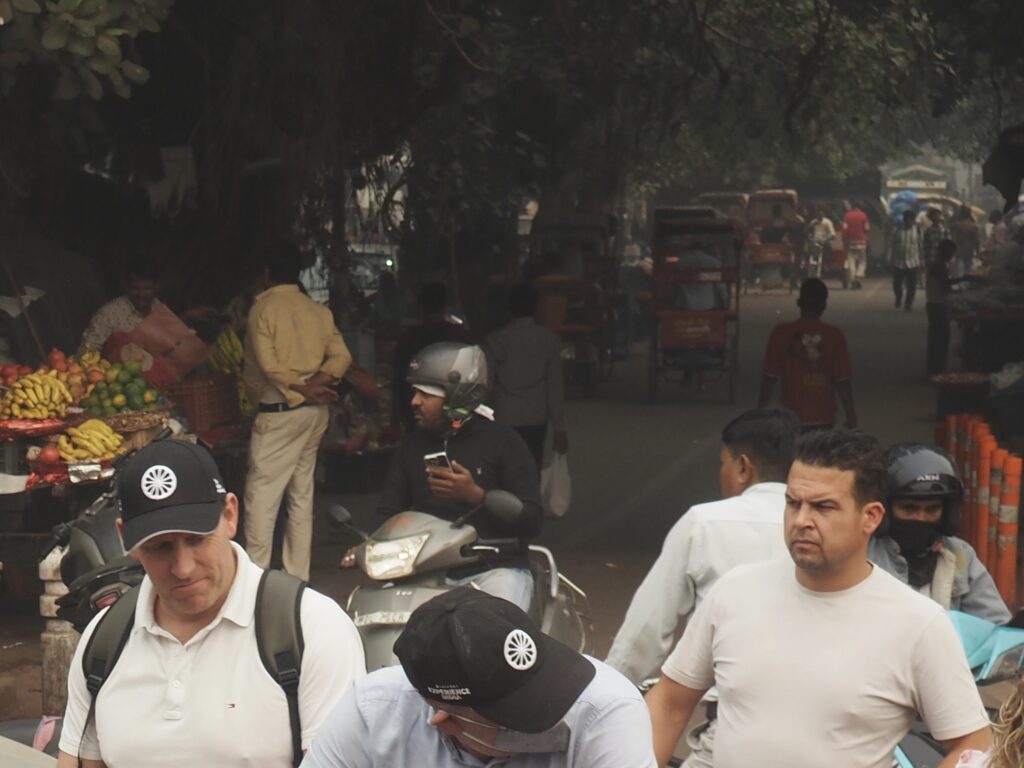
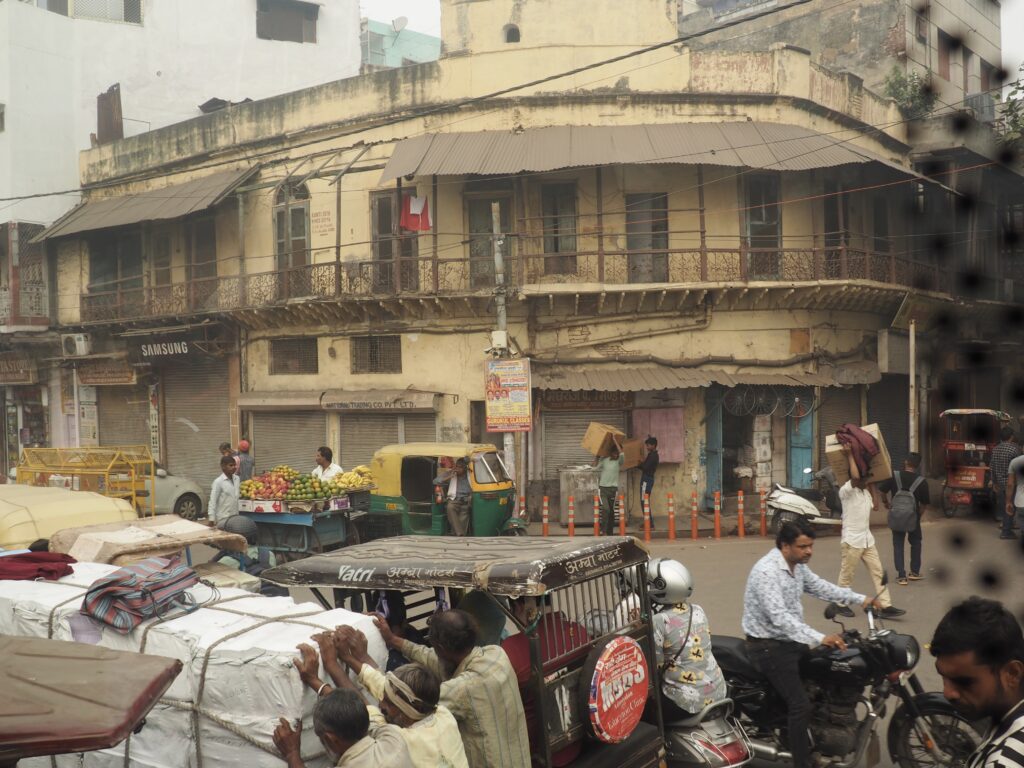
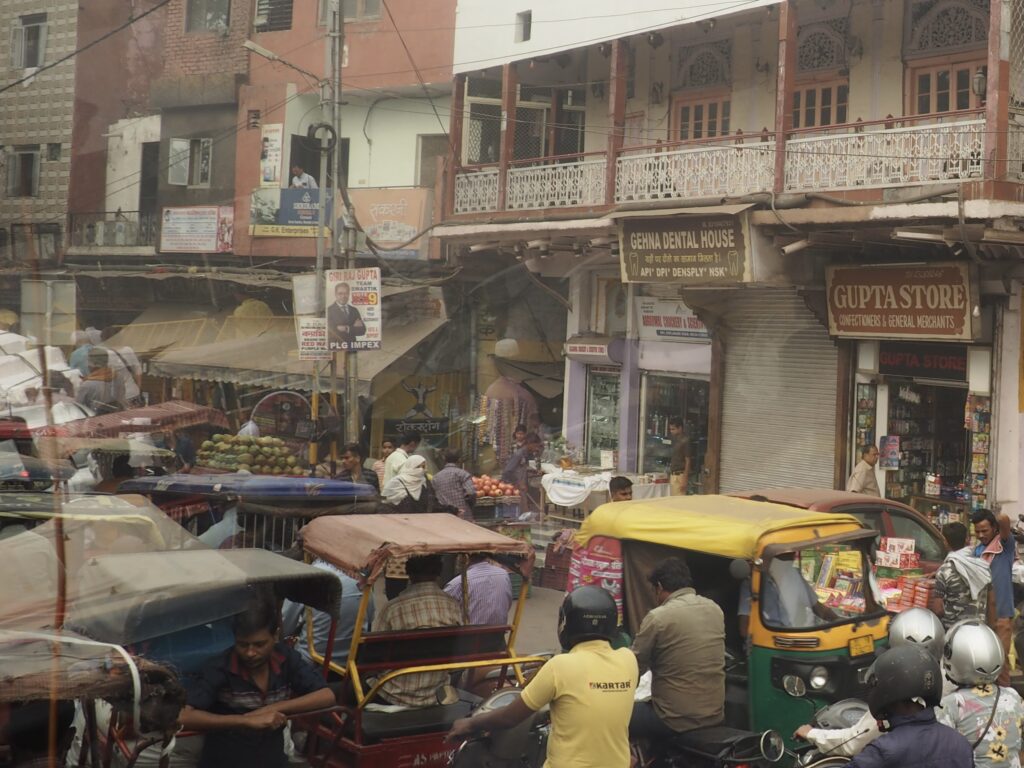
Once luxurious and fashionable, especially during the heyday of Shah Jahan’s 17th century rule, Delhi now has an air of chaotic decay, hastened by much of its Muslim population fleeing the violence of Partition to find refuge in Pakistan.











The crunch of daily life with supplies of all kinds in their “final mile” arriving by almost any means, compounded by tour buses gently inching forward, people out shopping, the occasional cow wandering about, people trying to get where they’re going by foot, bicycle, motorcycle (holding, at most, four people), rickshaw, tuk tuk, tractor (thankfully not in the heart of old Delhi, that we noticed), taxi, or private car, and tour groups on rented bicycles, the idea of lanes of traffic completely disappears and there is a certain calm, perhaps even gracious, cooperation and mutual respect amidst the din of horns alerting everyone of the presence of yet one more vehicle with someplace to go.

With such intense traffic, we abandoned our bus and completed the journey to Jama Masjid on foot, following our guide’s constant advice to “walk like a cow” – confident, aware and no quick moves.
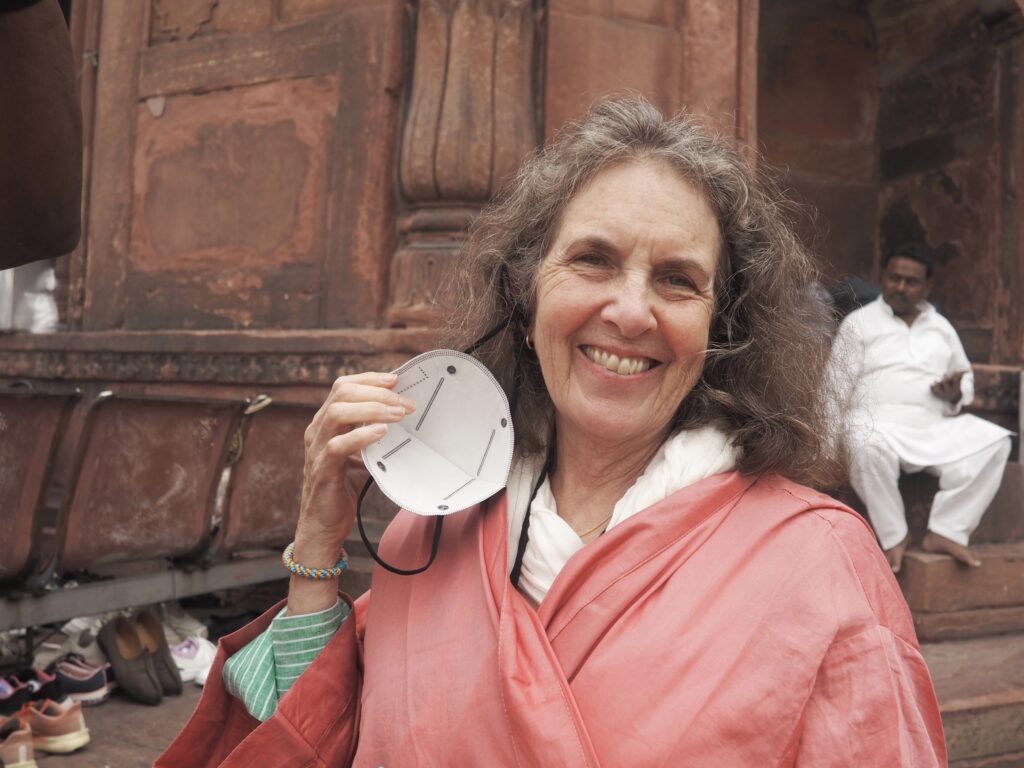
Since the mosque is an active place of worship, the women were provided with freshly laundered modesty robes by our tour provider, rather than wearing the mosque-provided robes. Shoes were, of course, left outside with the shoe walla. We heeded the advice to bring the disposable slippers from the hotel. Quite the fashion show.










From the mid 17th century, Jama Masjid is the largest mosque in India and was built by the legendary Mughal Emperor Shah Jahan (who did much of the significant building projects in Delhi).
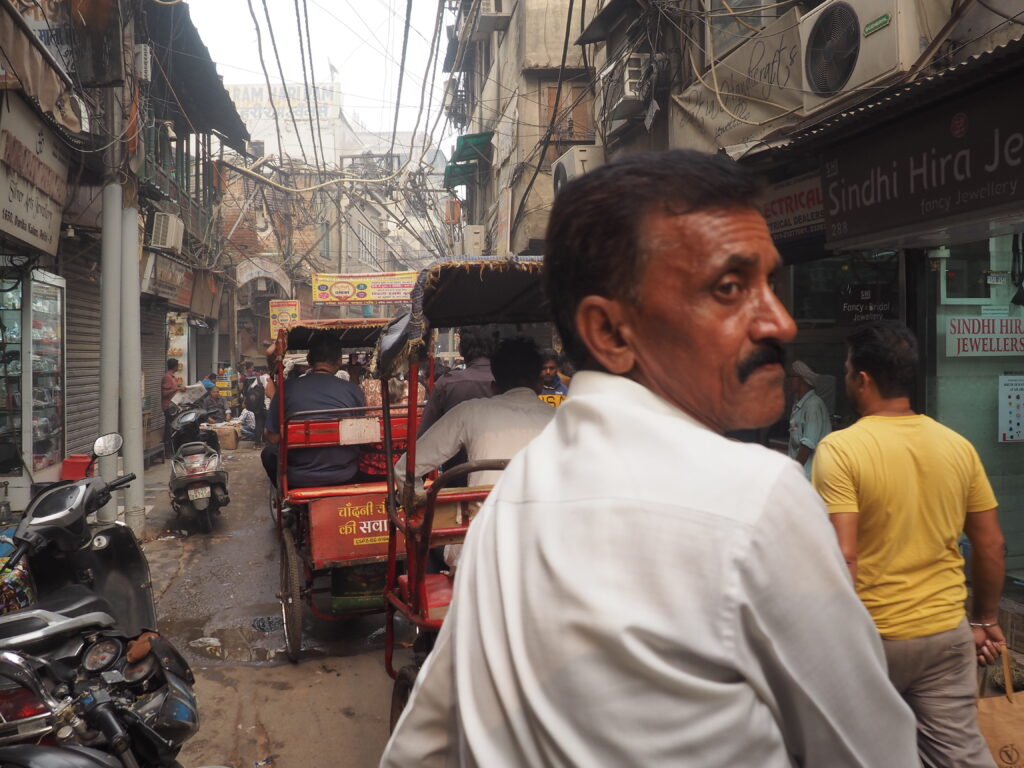
From the comparative serenity of a storied mosque, we plunged back into the old quarters of Delhi for a rickshaw ride which was strongly reminiscent of Mr. Toad’s Wild Ride, as we braced ourselves for a plunge through the narrow streets.










Well, that was exciting. Seriously.



Enroute to our New Delhi hotel, we stopped at the Raj Ghat, the cremation site of Mahatma Gandhi in a beautiful park setting. A ghat is any set of steps leading down to a river and “raj” is dominion or rule or royal. We understand all rivers to be sacred in Hinduism, although some more than others. The Yamuna River, flowing through Delhi is worshipped as the goddess Yamuna and downstream merges into the Ganges (or, Ganga Ji). According to the Hindu tradition, Gandhi’s “relics” post cremation were gathered and committed to the river. With some arcane exceptions, there are no Hindu cemeteries.

